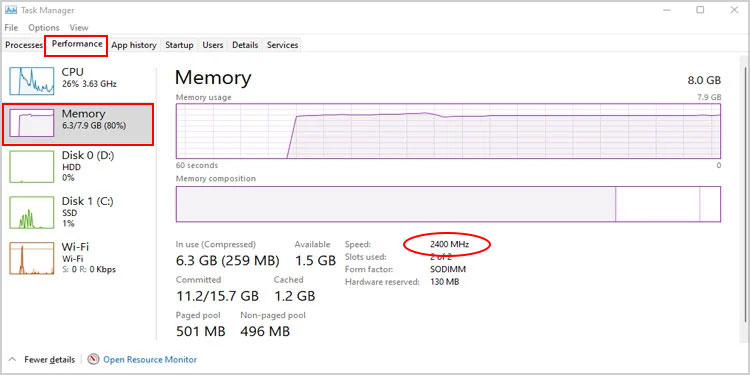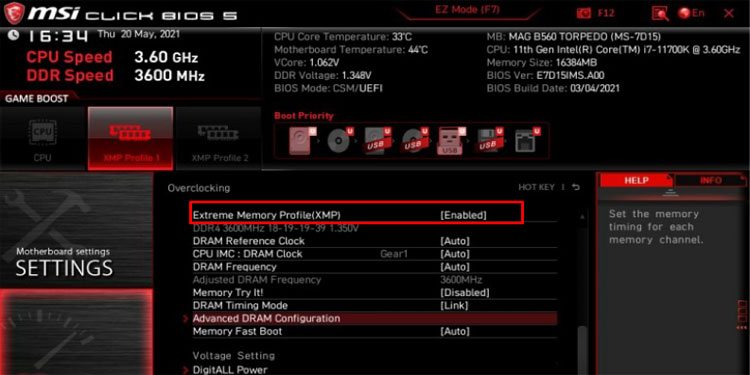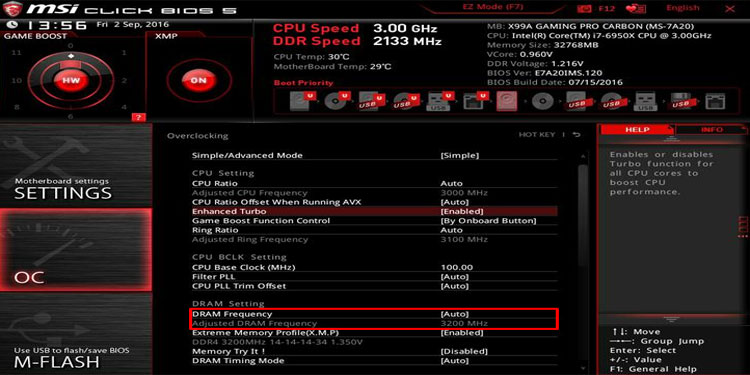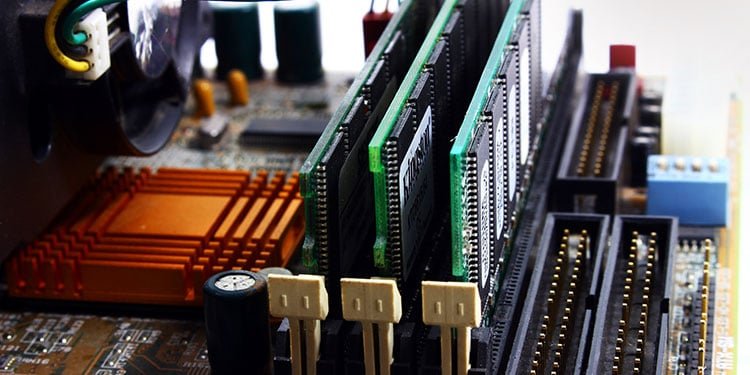Are you a computer lover searching for methods to make your system much more reliable? If of course, you may wish to begin with altering the RAM rate. Readjusting the RAM rate dramatically alters your computer system’s efficiency.
Whether you wish to boost or restrict your RAM rate, we will certainly give you with the needed actions to do so.
So, without additional trouble, allow us see just how we can transform RAM rate in BIOS.
How to Check My Current RAM Speed
When you acquire a RAM stick, a making business promotes a particular rate (generally in MHz) at which the RAM moves its information to as well as from the CPU. The BIOS often restricts RAM rate, and also your computer system can not completely do like it is intended to.
To examine your present RAM rate, please comply with these actions:
- Press Ctrl + Alt + Del essential at the same time and also pick Task Manager
- Click on More information if the Task supervisor just has a checklist of running procedures.
- Now, most likely to the Performance tab, after that click Memory

- Here, you can see all the information concerning your physical memory, including its rate, ports, in-use, as well as offered memory.
If the rate revealed right here does not match the rate that the producing firm markets, you may intend to readjust some setups in the BIOS to readjust RAM rate.
Note: You can just change the RAM rate from the BIOS. There are third-party applications, like CPU-Z, to obtain the information concerning your physical memory.
Before We Start
Before transforming the RAM rate, you ought to understand that transforming the incorrect BIOS setups might create your system to collapse arbitrarily. Tweaking RAM setups to the extreme can make your system breakdown.
So, if you encounter any kind of problems after you conserve these setups, it is advised to go back these adjustments. If you can not return the modifications, please reset the BIOS to skip setups.
You can not readjust your RAM rate in regular laptop computers. The regularity on these laptop computers is readied to optimum by default. The producer supplies Extreme Memory Profiles for pc gaming laptop computers, which allows you make use of extra RAM rate than the marketed quantity.
How to Change RAM Speed in BIOS
Depending on your motherboard, your BIOS will certainly have setups with various names. You will certainly require to browse via the BIOS to look for the setups discussed in the actions listed below.
Enable Memory Profiles
Enabling the memory accounts or overclocking accounts enables the individual to pick from a range of memory rates. Each account utilizes various memory rates as well as takes in various voltages.
It likewise boosts RAM’s rate greater than the promoted quantity without managing the inconvenience of hand-operated overclocking.
AMD and also Intel motherboards have various names for overclocking. For AMD motherboards, you can look for setups called DOCP (Direct Overclock Profile), whereas for Intel motherboards, it’s XMP (Extreme Memory Profile).
First, you require to see to it that your motherboard sustains XMP. If your motherboard does not sustain Extreme Memory Profile, please comply with the various other stated procedure to transform the RAM rate.
Now that you recognize your motherboard sustains memory accounts, you will certainly need to browse to the BIOS to allow it. Below’re the actions:
- To Enter the BIOS, press the Delete crucial or F2, relying on the motherboard maker, throughout the system boot-up procedure.
- Once you get in the BIOS, you will certainly require to locate the XMP account or DIMM account setups. These setups are usually situated in the memory administration area of the BIOS.
- There will certainly be 2 or 3 XMP accounts depending upon the XMP variation. Enable XMP and also choose any kind of among the accounts to transform RAM rate.

Change Memory Frequency Limiter
Some motherboard, by default, has a RAM regularity limiter. This indicates that the rate at which RAM and also CPU transfers information is limited, and also the rate can not exceed this constraint factor.
Enter your motherboard’s BIOS as well as look for setups with a name such as RAM regularity Limiter or Memory Frequency Limiter. Establish this worth to the optimum to use every one of your RAM possibilities.
Your motherboard might or might not have these setups. If it’s the last, please adhere to an additional technique to alter RAM rate.
Change DRAM Speed
If you are activating the computer for the very first time, the motherboard will immediately establish a reduced DRAM regularity than the promoted rate. Unless we alter the RAM rate from the BIOS, you will certainly not obtain the value.
Here’re the actions to transform the DRAM rate:
- Navigate your BIOS as well as look for DRAM setup
- You will certainly require to establish your DRAM regularity to handbook to change them. By default, DRAM regularity will certainly be Auto.

- Once you do the needed adjustments, conserve the adjustments and also leave the BIOS.
Related Questions
Which Is Better? A Lot More RAM or Faster RAM?
More RAM suggests it can keep a lot more information from an application providing the CPU a lot more information to procedure. Implying that it can run numerous applications behind-the-scenes.
In comparison to greater RAM, much faster RAM suggests a greater information transfer price.
So, the response truly relies on what you make use of the computer for. If you run several applications all at once, it is advised that you make use of a lot more RAM. If you desire even more frameworks per 2nd when video gaming, it is just optimal that you utilize RAM with even more rate.
Is Overclocking Good?
If your are a computer professional as well as you wish to obtain one of the most out of your computer system, it is constantly suggested to overclock your computer parts. Your system can collapse if you carry out severe overclocking.
Why Do RAM Manufacturers Advertise Higher RAM Speed When the Industry Standard Stock Clock Speed Is Much Lower?
The promoted RAM rate is the optimal rate at which the RAM can do. If a motherboard runs the RAM at the promoted rate, it can create system instability. The BIOS immediately runs RAM at a reduced rate.
If your computer system’s RAM performs at a slower rate than promoted, you can allow memory accounts that make it possible for the motherboard to make use of the promoted RAM rate.
For Intel, you can look for BIOS setups called XMP (Extreme Memory Profiles), whereas for AMD look for setups called DOCP (Direct OverClock Profile) or AMD Memory Profiles in BIOS.
Furthermore, some CPUs will certainly have a RAM rate limitation which it can manage. If your CPU just sustains up to a particular quantity of overclocking, RAM rate will certainly not go past that factor.
Conclusion
Summing it up, if you get on a desktop computer computer, you can just transform your RAM rate by browsing the BIOS. It is not constantly that straightforward for a lot of laptop computers.
Moreover, transforming the RAM rate might not constantly be valuable. Occasionally, it can also trigger your system to collision. Because situation, change these regularities to previous setups.
.
